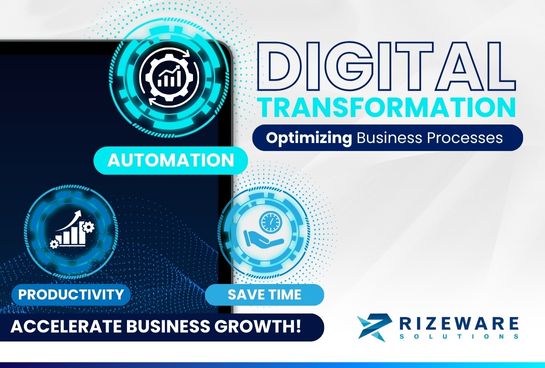
Optimizing Business Processes

Erik Ruda
Aug 02, 2024
Digital Transformation Blog Series – Erik Ruda, CEO, Rizeware Solutions
After optimizing your IT infrastructure with the hardware, software, and cloud services necessary to create a digitally powered organization, the next step might arguably be the most important and impactful to your business. That is, leveraging your transformed infrastructure to optimize the processes, workflows, and overall operations that impact employees, partners, suppliers, and customers across your entire business ecosystem.
Depending on the size of your organizational ecosystem, this could be a complex process. In this blog, we’ll share seven suggestions on how to address these challenges and gain the greatest value from your digital transformation investments.
1. Assess Operations
The best place to start is with a detailed assessment of your current operational processes. What’s working? What’s not? Where are the bottlenecks? Where are the growth opportunities? How can your new digital-powered infrastructure help you achieve your goals? Gather feedback from employees who directly interact with these processes. They can help identify redundancies, gaps, and opportunities for improvement.
2. Optimize Workflow
Learnings from the assessment above will provide clarity on the path forward. And, with a new digitally powered infrastructure in place, the timing is perfect for reinventing how your business works. It’s an opportunity to design and implement a seamlessly integrated workflow that could start with innovative product design and extend to an optimized customer experience.
3. Extend Ecosystem
In today’s digital economy, everyone is connected. Consequently, you need to ensure that your newly developed workflows and processes consider the role and value of your customers, partners, and suppliers, regardless of their location. When you need to communicate with them and share critical information, the process should be seamlessly integrated (and personalized) within your overall workflow.
4. Apply Automation
After mapping out a new integrated workflow, look for opportunities to leverage your digital investments to automate and accelerate operational processes where possible. The goal is to minimize wasted time, maximize employee productivity, and accelerate business growth. The rapid evolution of AI-powered software tools is already making this dream a reality for forward-looking organizations.
5. Leverage Data
Optimizing business processes requires optimizing the use of corporate data, which is every organization’s lifeblood. As noted in a previous blog, this data must be carefully preserved and protected during the infrastructure transformation process. Your new infrastructure should include tools that enable you to extract strategic insights from business-critical data and use them to improve every aspect of your operations.
6. Value Customers
This topic may seem out of place in a discussion of process transformation, but it’s not. Digital transformation creates an opportunity to redefine your customer relationship at every touchpoint. This can include personalized customer engagement, superior product or service delivery, white-glove customer support, and more. The goal of a personalized customer journey should influence your internal workflows and processes.
7. Optimize Continuously
Even after investing the time and effort to optimize internal workflows and processes, there will likely be bumps in the road. Bumps are normal, though, because businesses are living organisms that continuously change. Fortunately, your new digitally powered infrastructure should be far more flexible and scalable than prior legacy systems and, therefore, will adapt to changes when they occur.
Thus far in this series, we’ve covered several important phases of digital transformation, including strategic planning, change management, infrastructure upgrades, and process optimization. Next week, we’ll look at the issue of metrics used to evaluate the success or failure of this transformation journey.

